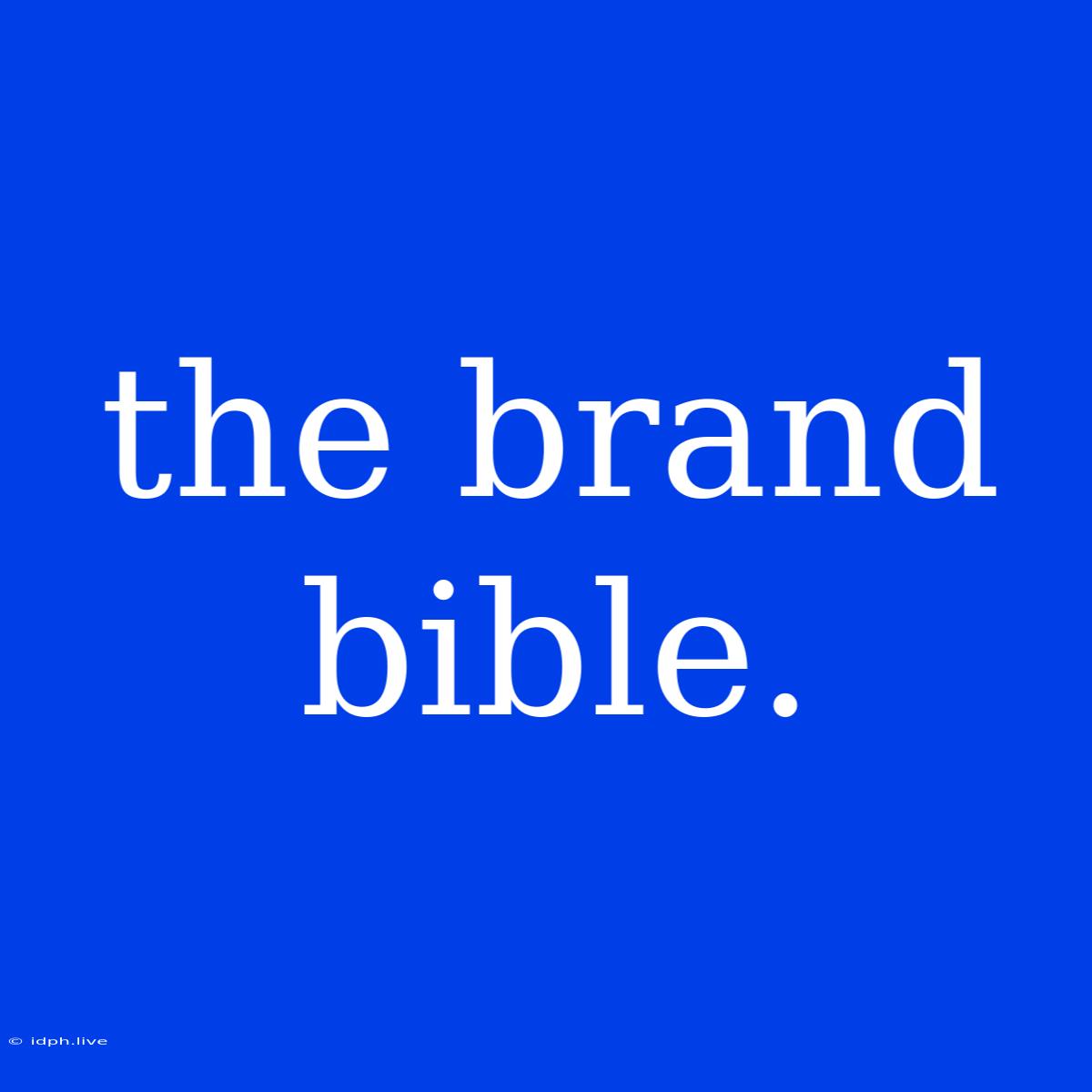The Brand Bible: Your Guide to a Consistent and Powerful Brand
A brand bible, also known as a brand book or style guide, is a crucial document for any business. It serves as the central source of truth for all things related to your brand, ensuring consistency and clarity across all touchpoints.
Think of it as a brand roadmap, guiding everyone involved in your business, from marketing and sales to product development and customer service, to communicate your brand's essence effectively.
Why is a Brand Bible Important?
Consistency is key: A well-defined brand bible helps maintain a consistent brand experience across all platforms, from your website and social media to your packaging and marketing materials.
Clarity and direction: It provides a clear understanding of your brand's values, personality, and target audience, ensuring everyone is on the same page.
Efficiency and scalability: By standardizing brand elements and messaging, you streamline decision-making and empower teams to work efficiently.
Protecting your brand: The bible acts as a safeguard, ensuring your brand's identity remains true to its core values and avoids dilution.
What Should Be Included in a Brand Bible?
1. Brand Overview:
- Brand Name and Logo: History, meaning, usage guidelines, color palettes, fonts, and variations.
- Brand Mission, Vision, and Values: What your brand stands for, its purpose, and core beliefs.
- Target Audience: Detailed description of your ideal customer, their demographics, psychographics, and needs.
2. Brand Voice and Tone:
- Brand Personality: Describe your brand's character, using adjectives and metaphors.
- Voice and Tone Guidelines: Define the style of your written and spoken communication, including tone, language, and grammar.
- Messaging Framework: Key messages and slogans that communicate your brand's value proposition.
3. Visual Identity:
- Color Palette: Primary and secondary colors, with their meanings and usage guidelines.
- Typography: Font families, styles, and sizes for different applications.
- Imagery and Photography: Style guidelines for visuals, including photography, illustrations, and graphics.
4. Brand Applications:
- Website and Social Media: Guidelines for branding and design, including layout, content, and tone of voice.
- Marketing Materials: Templates and specifications for brochures, flyers, presentations, and other marketing collateral.
- Product Packaging and Labeling: Design standards, including colors, fonts, and messaging.
5. Brand Guidelines and Policies:
- Brand Usage and Restrictions: Policies on brand logo usage, trademark protection, and copyright.
- Brand Monitoring and Enforcement: Processes for ensuring brand consistency and addressing any violations.
Building Your Brand Bible:
- Start with your core values: What defines your brand? What makes it unique?
- Conduct audience research: Understand your target audience and their needs.
- Review existing materials: Analyze your current branding and identify strengths and weaknesses.
- Define your brand voice and tone: How do you want to communicate with your audience?
- Create clear and concise guidelines: Keep it simple and easy to understand.
- Regularly review and update: Ensure your brand bible stays relevant and reflects your evolving brand.
The brand bible is an invaluable tool for any business looking to create a consistent and impactful brand. By investing the time and effort in developing a comprehensive and well-defined brand bible, you set your business up for success.

